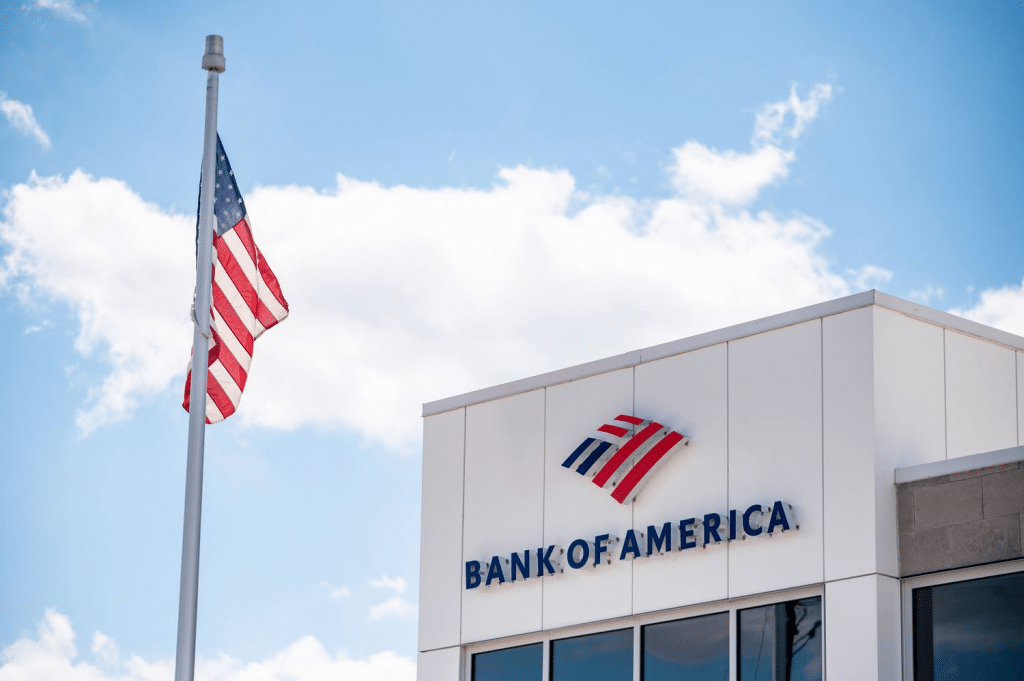Have you ever tried transferring a significant sum of money internationally just to be amazed at how fast and efficient the process is? It made me think—who are the real giants driving this financial machinery, keeping the gears of the global economy spinning? This inquiry prompted me to research the world’s largest banks, and the results are simply amazing. The sheer magnitude of these institutions is mind-boggling, not only in terms of total assets but also in their global reach spanning continents and industries. The top ten biggest banks in the world have trillions of dollars in assets, but they’re more than just numbers. They have weathered economic catastrophes, led the way in innovation, and influenced how businesses and individuals manage money around the world. In this post, we’ll look at the stories behind these financial powerhouses.
The Biggest Banks in the World in 2024
#1. The Industrial and Commercial Bank of China (ICBC)

Total Assets: $5.5 trillion, with headquarters in Beijing, China.
ICBC is more than just a bank; it is the world’s largest bank in terms of total assets. What’s most amazing is how neatly ICBC has incorporated technology into its banking operations. Their internet and mobile banking networks conduct billions of transactions each year—more than Europe’s entire population combined. However, few people are aware that ICBC is a leader in green financing, having made significant investments in renewable energy projects. This strategy shift toward sustainability is often overlooked, yet it is expected to be a significant development driver in the future decade.
#2. China Construction Bank Corporation (CCB)

Total Assets: $4.6 trillion, with headquarters in Beijing, China.
CCB is another behemoth that not only dominates the Chinese market but is also expanding its global presence. But here’s something less known: CCB has quietly emerged as a leader in smart banking solutions. Their AI-powered customer support bots handle millions of requests each year, lowering wait times and increasing user happiness. They are at the forefront of combining AI with traditional banking, a trend that is altering how financial institutions approach client experience.
#3. Agricultural Bank of China (ABC)

Total Assets: $4.5 trillion, with headquarters in Beijing, China.
ABC, with its strong roots in rural China, has grown into a powerhouse in both urban and rural banking services. What is sometimes ignored is how ABC’s microfinance initiatives have revolutionized small enterprises and farmers’ lives across China. With assets reaching $4 trillion, they have introduced modern banking to some of the world’s most distant areas. ABC has a distinct advantage over competitors because of its focus on microfinance, which allows it to reach previously untapped regions.
#4. Bank of China (BoC)

Total Assets: $4 trillion, with headquarters in Beijing, China.
BoC has always been a global player, having operations in over 60 countries. However, many people overlook the Bank of Canada’s leadership in cross-border transactions and trade finance. While many banks focus on domestic operations, the Bank of China plays an important role in financing foreign trade, particularly in Southeast Asia and Africa. Their global network provides an advantage, allowing businesses to trade abroad with less friction and greater trust.
#5. Mitsubishi UFJ Financial Group (MUFG)

Total Assets: The company’s total assets are $3.1 trillion, and its headquarters are in Tokyo, Japan.
MUFG is Japan’s largest bank and ranks among the world’s most powerful financial institutions. What is less widely discussed is its bold growth into digital banking and fintech. With the Japanese economy frequently regarded as reluctant to adapt, MUFG has taken major moves toward digitization by providing seamless online and mobile banking services. Their collaborations with fintech companies are paving the path for a new era of banking in Asia.
#6. JP Morgan Chase & Co.

Total Assets: $3.2 trillion, with headquarters in New York, USA.
JPMorgan Chase is a financial behemoth in the United States, renowned for its powerful investment banking branch. However, what distinguishes JPMorgan is its strong investment in blockchain technology. The bank’s digital coin, JPM Coin, is transforming the way businesses manage cross-border payments by making them faster and more secure. This foray into blockchain might change the financial world, establishing JPMorgan as a pioneer in digital currency.
#7. HSBC Holdings

The company has $3 trillion in total assets and is headquartered in London, UK.
HSBC’s global reach is unparalleled, yet it is often underestimated for its leadership in wealth management and private banking. HSBC caters to high-net-worth individuals and institutions with specialist services ranging from investment portfolios to estate preparation. In truth, HSBC earns a sizable percentage of its income from managing the money of some of the world’s richest families.
#8. Bank of America

Total Assets: $2.8 trillion, with headquarters in Charlotte, USA.
Bank of America may be a household name, but what is frequently overlooked is how deeply ingrained it is in the daily lives of millions of Americans. With approximately 67 million clients and a sizable share of the US mortgage industry, it is an important player in the American dream. Their unique Erica AI-driven personal finance tool has transformed the way clients manage their finances by providing individualized guidance and data-driven insights.
#9. Wells Fargo

Total Assets: $1.9 trillion, with headquarters in San Francisco, USA.
While Wells Fargo has had its fair share of controversy, it remains one of the world’s most influential banks. What is sometimes overlooked is that Wells Fargo leads in commercial lending. Their emphasis on assisting small and medium-sized organizations (SMEs) has been a lifeline for many businesses, providing loans and financial tools necessary for growth.
#10. Citigroup

Total Assets: $1.7 trillion, with headquarters in New York, USA.
Citigroup is another American behemoth, renowned for its global reach. Its concentration on emerging markets, however, is fascinating. Citigroup has actively expanded into markets such as Latin America and Southeast Asia, delivering services that other banks are hesitant to provide. Their digital banking push has also positioned them as a pioneer in offering financial services to previously underserved communities.
How do banks make money?
Banks generate revenue by borrowing from depositors and lending to borrowers. The spread, or net interest income, is the difference between the interest rate paid to depositors and the rate charged to borrowers for new loans, and it is the principal source of revenue for banks. Banks also make money by charging fees or charges for different services such as account servicing, brokerage, wealth management, financial advice, and investment banking.
How Did the Biggest Banks Grow So Big?
The largest banks reached their current size through a combination of organic growth, mergers and acquisitions, innovation, and market dominance.
What is the World’s Largest Bank?
As of September 31, 2024, JP Morgan & Chase was the world’s largest bank by market capitalization.
World’s Largest Banks by Country
Now that we know the top ten banks in the globe in 2024, which banks dominate their respective countries in terms of market capitalization? Here are a few of the more popular ones:
| Bank | Country |
| JPMorgan Chase | USA |
| ICBC | China |
| HSBC | UK |
| HDFC Bank | India |
| Royal Bank Of Canada | CANADA |
| BNP Paribas | France |
| Mitsubishi UFJ Financial | Japan |
| Commonwealth Bank | Australia |
| The Saudi National Bank | Saudi Arabia |
| UBS | Switzerland |
| Santander | Spain |
These banks, which are among the world’s largest, continue to affect the global financial scene thanks to their immense resources and reach.
What is a bank’s market capitalization, and why does it matter?
The total value of a bank’s equity shares is known as its market capitalization. It is critical since it gives investors a picture of the company’s size and can influence its capacity to raise additional capital, among other reasons.
How does a bank’s market capitalization impact its operations?
Banks with a higher market capitalization typically have more resources for expansion, investments, and lending. It can also give stability, reducing the likelihood of the bank becoming a takeover target.
What elements decide the largest banks in the world?
The world’s largest banks are often rated according to their total assets, which include loans, investments, and cash reserves. Other important indicators are market capitalization, revenue, and worldwide reach (the number of countries in which they operate). It is also critical to assess liquidity and brand strength, as major institutions handle a significant amount of global financial activities.
How do the world’s largest banks affect the global economy?
These banks serve an important role in global economic stability by providing liquidity, facilitating trade, and financing enterprises and governments. Their size enables them to influence interest rates, investment trends, and economic policies across a wide range of businesses. They are also important actors in international trade, facilitating billions of cross-border transactions daily.
What are the key services provided by the world’s biggest banks
While each bank has its specialties, the largest banks often provide a wide range of services, including:
Our services include commercial and retail banking, investment banking, wealth management, corporate loans, insurance, currency trading, mergers and acquisitions advising, and digital banking.
How do these banks handle risks?
Given their size, major banks make significant investments in risk management systems, which use complex algorithms and data analytics to spot financial abnormalities or possible dangers. Many of these banks also follow Basel III requirements, which require adequate capital reserves to withstand economic downturns and market swings. Furthermore, diversification into areas such as fintech and green financing allows companies to offset the risks associated with traditional banking sectors.
Why do Chinese banks dominate the world stage?
Chinese banks are at the top of worldwide rankings due to various variables, including China’s second-largest economy.
- Government-backed loans and investments in infrastructure and international trade ventures.
- China’s rapid urbanization and industrial growth are driving up demand for financing and banking services.
- China’s enormous population generates a considerable demand for retail and commercial banking services.
How do American banks like JPMorgan Chase and Bank of America compare to their worldwide counterparts?
While Chinese banks have the most total assets, US banks such as JPMorgan Chase and Bank of America are the leaders in investment banking, M&A advising, and global capital markets. U.S. banks are frequently more inventive in fintech and digital banking solutions, allowing them to compete globally while having fewer overall assets than their Chinese peers.
What issues do the world’s largest banks face?
Regulatory demands pose a significant challenge for these banks, preventing fraud and economic disasters worldwide.
- Cybersecurity threats: As digital banking expands, the possibility of cyberattacks rises, making security a primary priority.
- Global economic instability: Economic shocks, such as recessions, geopolitical conflicts, and pandemics, can have a significant impact on bank profitability.
- Sustainability demands: Investors and customers are increasingly asking banks to prioritize sustainable investments and climate risk management.
Are the world’s largest banks too big to fail?
While the term “too big to fail” was popularized during the 2008 financial crisis, many of these banks are extensively regulated and must maintain capital reserves to weather financial downturns. However, due to their size, any big failure might have far-reaching consequences for the global economy, which is why governments and regulatory authorities continue to closely watch them.
How are these banks leveraging technology and AI?
The world’s largest banks are leaders in artificial intelligence (AI) and blockchain technology. For example, JPMorgan employs blockchain to safeguard cross-border payments, whereas CCB uses AI to improve customer service and loan decisions. The application of these technologies enables banks to provide faster, safer, and more tailored services.
Key Takeaways
- The top ten banks in the world control approximately $35 trillion in assets, which affects everything from personal savings to corporate mega-deals.
- Whether it’s AI for customer service (CCB) or blockchain investments (JPMorgan), the world’s largest banks are driving technological innovation.
- From ICBC’s green finance programs to HSBC’s campaign for ethical investing, sustainability is becoming a major emphasis for these financial behemoths.
- Banks such as the Bank of Canada and Citigroup play an important role in international trade and investment by assisting businesses in navigating difficult cross-border transactions.
- Each of these banks produces revenue from a diverse range of services, from traditional loans to cutting-edge fintech solutions, allowing them to respond to market developments.
Conclusion
The world’s largest banks are not merely sitting on mounds of cash. They are continually innovating, responding to global changes, and shaping every area of our financial lives. From green financing to blockchain technology, these institutions are influencing the future of banking. Which of these banks’ ideas do you believe will have the biggest impact on global finance in the coming decade?
- Best Banks In Georgia: Top 15 Best Banks
- Trillion dollar companies list 2024/2025
- The Largest Companies In the United States
- BEST INVESTMENT MANAGEMENT COMPANIES IN 2024
- How Much Money Does the U.S. Owe China? The Numbers Behind the Debt






